Mention Irish illuminated manuscripts and the chances are the Book of Kells will pop into your mind. Not only is it a masterpiece of the illuminator's art, it's a global symbol of Irishness, and its presence in Trinity College Library draws a non-stop stream of visitors.
Extraordinary and unrivalled though it is, the Book of Kells is only part of the story, and that story has just been significantly enlarged thanks to a major conservation programme completed over the past three years. Enabled by a grant from the Bank of America Merrill Lynch Art Conservation Project, the programme was led by Trinity library's keeper of preservation and conservation Susan Bioletti, and head of the history of art & architecture department, Dr Rachel Moss.
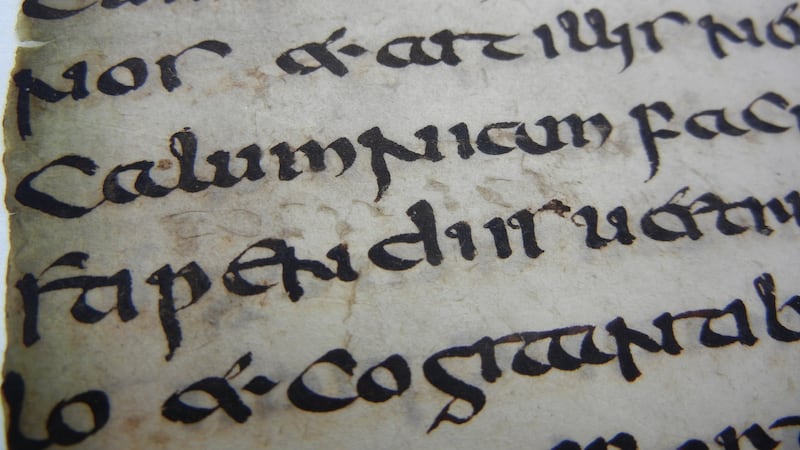
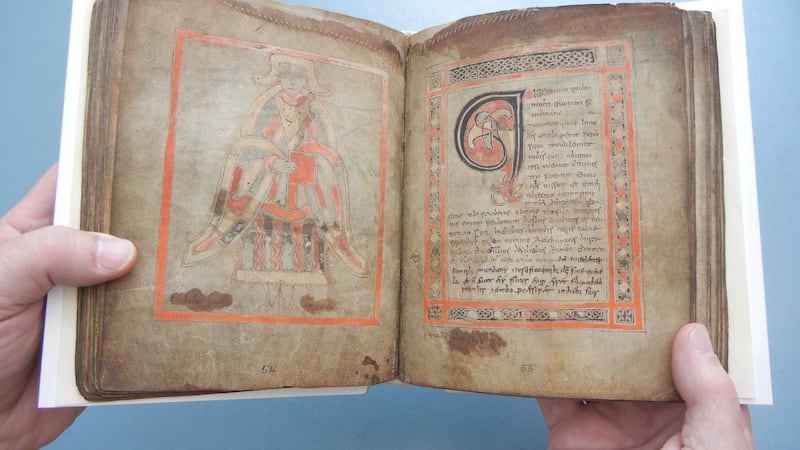
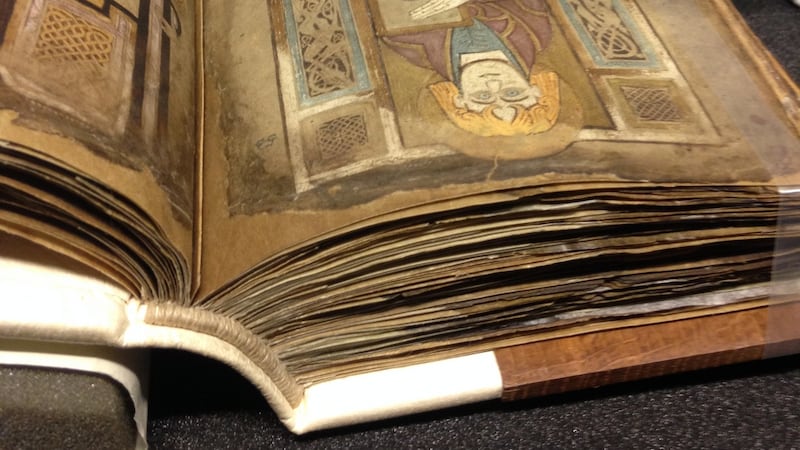
Relatively few examples early Christian gospel books survive, and Trinity College library is in the fortunate position of possessing seven. With possession comes responsibility and, thanks to the project grant, Bioletti, Moss and their team have dealt with four of them, all previously accessible to scholars only in restricted circumstances.
All four have been comprehensively repaired, studied, analysed and – vitally – digitised. So not only will the newly conserved manuscripts join the Book of Kells on public display, they are universally available online via high-quality digital images. Each comes from a different part of Ireland and has its own distinctive history.
For whatever reason, the Garland of Howth is particularly obscure. Historically, Bioletti and Moss conjecture, small, settled rural communities may identify more strongly with significant local artefacts. The ninth-century parchment manuscript is associated with St Nessan's monastery on Ireland's Eye, but is little known even in Howth. Legend has it that St Nessan threw the holy book at a devil and the force of the blow threw the hapless devil from Ireland's Eye against the mainland cliff face, denting the rock and creating a feature still known as Puck's Rock.
The Book of Mulling comes via the Kavanagh family in Co Carlow. It's an eighth-century pocket-gospel long associated with the monastery of Saint Mullins and was in the possession of the Kavanagh family for centuries until they passed it on to Trinity for safe keeping.
Both it and the Book of Dimma, another eight-century manuscript of the four Gospels, owe their survival to the fact that they were regarded as relics and carefully preserved in metalwork shrines. More, Moss points out, the books' symbolism extended into the political arena. For the O'Carroll and Kavanagh families, possession of the books reinforced not just their social status but their territorial claims as well.
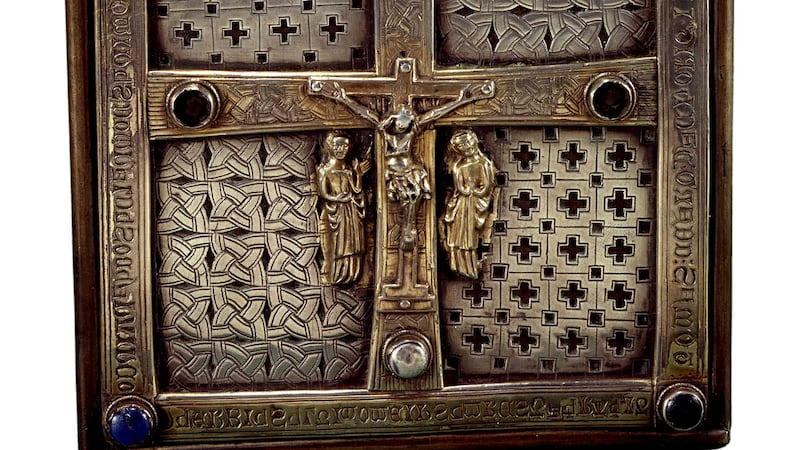
All is not as it seems with the Book of Dimma. At some point in the 11th or 12th century, in three of its four mentions, the name of the original scribe – Danchairde – was scratched out and Dimma was substituted. The motivation, Moss suggests, was to nudge it closer to divinity by attributing it to Dimma who was said to be the personal scribe of St Crónán of Roscrea.
A miraculous context was added with the story of how, when Dimma was asked to produce the gospels in a day, the sun shone without respite for 40 days and nights and he was miraculously enabled to complete his impossible task. Opportunistic re-attribution was not unique to Dimma, Moss notes. There are other examples, including the Book of Armagh.
One of the very earliest surviving Irish manuscripts, the fragmentary Codex Usserianus Primus could date back as far at the fifth century and was probably produced somewhere on mainland Europe. Annotations in early Irish place it in Ireland quite far back – "To see the actual handwriting on the page brings you right back in time," Moss remarks – but its exact whereabouts are unknown until it found its way to Trinity in the 17th century. Understandably, of the four it was in the poorest condition. "It is," Moss emphasises, "the earliest gospel book that we have, so for scholars it's extremely useful."
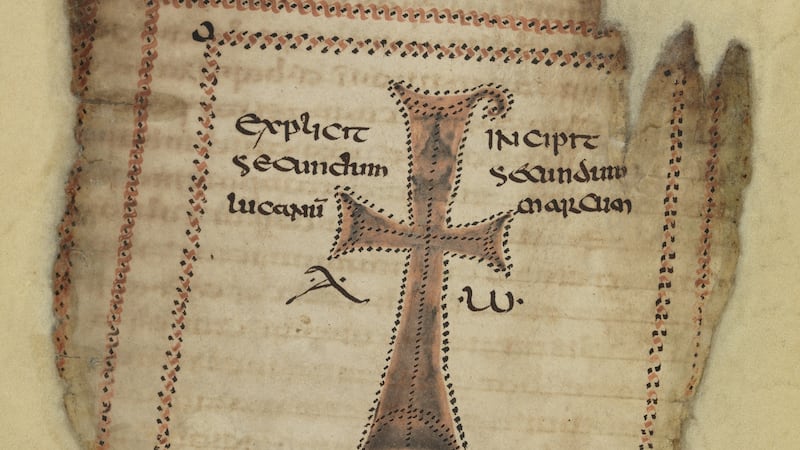
Of course, rare and important as they are, none of these manuscripts is going to displace the Book of Kells from its throne. Monumental in scale and staggering in the quantity and quality of its illuminations, it is an extraordinary achievement, understandably described in 1007 as "the most precious object of the Western World". There are, for example, an estimated 159 calve-skins invested in its vellum leaves. From the beginning, it was intended as an object of prestigious display. Mulling and Dimma, by comparison, are small, highly portable and designed for personal use.
They also have a more personal character. Dimma and Mulling are immediately pre-Kells. Mulling features portraits of the four evangelists, plus illuminated initial caps. Whereas the impeccable majuscule text of Kells has a formal, print-like quality, Mulling and Dimma have a more handwritten feeling. In terms of illustration, Moss notes that they have a more spare, modern aesthetic. As Bioletti puts it: "It's not as slick as Kells, but there is an exquisite line work and not much embellishment. There is a delight in surface effects, playing on opacity and translucency."
Illumination was a serious business. It wasn’t just a question of decoration. The reader should be struck by the transcendent nature of the gospel message, so illuminations should have a wow factor. Hence the attention paid to such surface effects, including the use of gum to create gloss and a liking for vivid colour. Fading over time is inevitable, yet some colours retain remarkable vibrancy.
Bioletti points point to the way previous generations of scholars did not have the technology now available and may have made assumptions on the basis of inadequate evidence.
It was speculated that the illuminators’ intense blue pigment derived from highly prized lapis lazuli. That would have meant a supply chain extending to Afghanistan, so one was presumed. In fact, Bioletti relates, analysis provided a source much closer to home: “They used an indigo blue mixed with gypsum, aiming for a lapis-like effect.”
Which, ingeniously, they achieved. That is the general story: “More local materials used with expertise than exotic imports.” Several of those materials were toxic, such as red lead and the bright yellow derived from an arsenic sulphide that could pass for gold. Plant dyes and earth colours were widely used.
Both Moss and Bioletti see this not as the conclusion of a project as the beginning of a process. All the material is freely available to researchers as it never was before.
“There are already publications coming out of it,” Moss says. “It’s opening up Irish art of this period to the world. It means you can begin to have conversations, to join the dots. Ideas can be exchanged. There are still so many unknowns.”
- The four newly restored manuscripts will be on display in The Book of Kells Exhibition at Trinity College Library on a rotational basis and they can be viewed online













